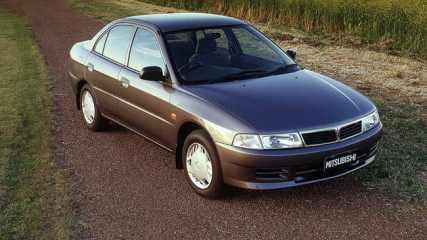Used first cars review: 2006
By Bill McKinnon · 05 Feb 2011
On a tight budget, you had four options: unsafe cars, unreliable cars, really boring cars or cars that combined all three characteristics. In the past decade, though, it's become easier to find a tidy, safe, cheap used car, for several reasons.Firstly, used cars don't hold their value like they once did. New cars have become cheaper in real terms, and sales have boomed, so there's a lot more used cars on the market.Cars are also much safer than they used to be. Government legislation and independent crash test programmes like NCAP, (which publicises the results of its tests, much to the annoyance of the industry) have forced car makers to improve safety. A 2005 car, no matter what make it is, will be safer than a 1995 car. At the minimum, you want two front airbags and anti-lock (ABS) brakes.Unless it's French or Italian, in which case a weekly dummy spit is part of the "ownership experience," most cars from the last 10 years will be pretty reliable, as long as servicing has been done by the book.We are talking about ordinary, everyday cars here, that haven't been thrashed. If you're looking at some dude's slammed, chipped Subaru WRX and the price seems too good to be true, chances are it will self-destruct before you make it home. You pay your money and you take your chances.Immaculate, low kilometre cars owned by little old ladies do exist, and they are gold. So is a complete service record, especially if it's from the dealer who sold the car new. Let's see if we can find a few to recommend. Bottom dollar in our search is $5000.There's not much joy at this money, but the last of the Mitsubishi Magnas, from 2004-2005, are great value and reasonably plentiful. Many will be ex-renters. That's not necessarily a bad thing, because serving will have been done to schedule. The 3.5-litre V6-four speed auto ES has four airbags and ABS.Another Mitsubishi, the Lancer, is the best small car we can find at this price. Toyota Corollas are fine too, though they're more expensive. The Lancer's as sexy as a can of baked beans and completely bulletproof. Pay about $7000-$8000 or so for a 2005 model. Find one with optional ABS and six airbags.If you've got around $10,000 to spend, you have much more choice. In 2004, Mazda made six airbags and ABS available across its entire range, as options or standard, so any Mazda2 or Mazda3 from 2004 on will be worth checking out. Mazda does blue chip quality, and if you find a good one, with a service book, buy it. You'll pick up a 2 for less than $10,000; a 3 will be $10,000-$12,000.If you need something bigger, this sort of money will also get you into a 2004-2005 Subaru Liberty, another top car from Japan's A league. All wheel drive, excellent handling and Subaru's class leading NCAP scores are pluses. The 2.0-litre four won't rip your arms off, but it will do the job. Wagons cost a little more.You might prefer a small SUV wagon instead, so look for a 2004-2005 Subaru Forester, or Toyota RAV4, at $12,000-$15,000. If you need a big car for a big country, the Aussie six is hard to go past.You'll pay $10,000-$13,000 for the first of the VE Commodores from 2006. The 3.6-litre V6 sounds like 1000 leaf blowers on maximum thrust, however it's durable enough. Holden got serious about safety with VE, so you get stability control as standard. It might take a while to find the right car, but in the end, it pays to be fussy. Second hand doesn't have to mean second best.WHERE TO BUY?DealerPros: On cars under 10 years old, most states require a warranty, typically 3 months or 5000 kilometres. You also get guaranteed title. Franchised dealers (ie those who also sell new cars) usually have the best selection of used cars; the trade-ins they don't want are unloaded to non franchised dealers or auctions.Cons: Can be more expensive than a similar car bought privately. Beware of non-franchised dealers selling flood damaged or rebirthed (ie cars written off by insurance companies but then repaired) from Queensland.PrivatePros: The best way to find a bargain.Cons: You have to do plenty of legwork, and finding the right car, in a place that's close to where you live, can be a time consuming process. There's no guarantee of title or provenance, and no comebacks if it drops its guts on the way home. Buyer beware.AuctionsPros: Ex-government or fleet cars, usually properly serviced, with low kilometres. Guaranteed title. Many dealers buy cars at auction, take them to their car yard, and jack the price up by thousands of dollars. Buy it yourself, and pocket the difference.Cons: You can't test drive the car before you bid. It's also easy for an amateur to pay too much, so go to a couple before you buy to get an idea of prices and how it all works.








